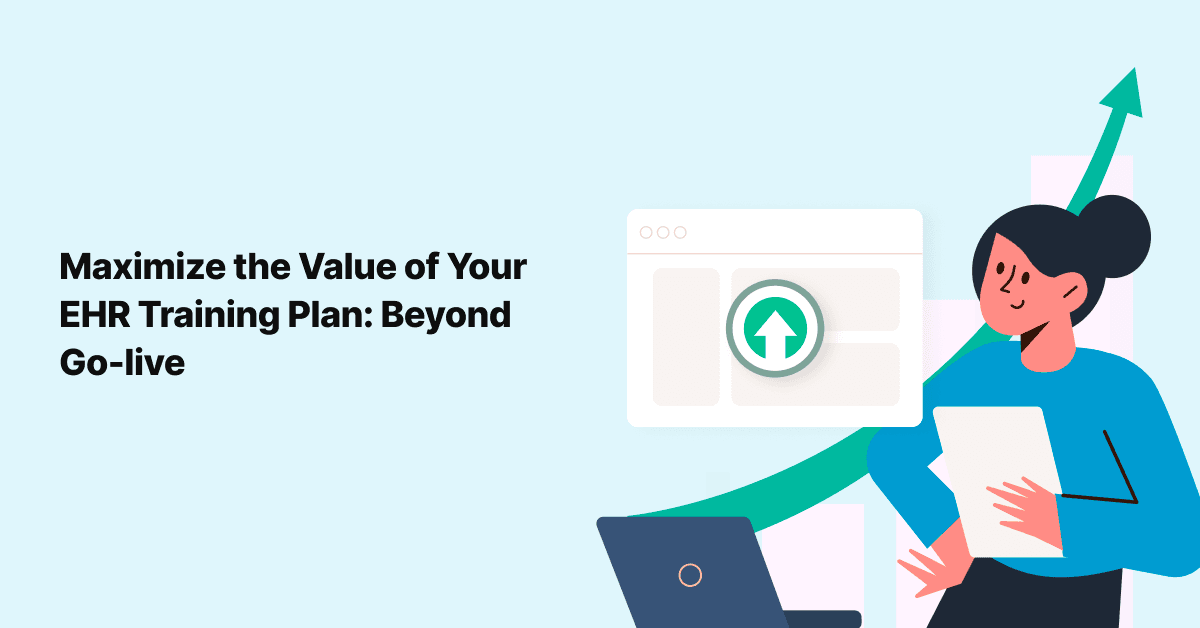
Maximizing the Value of Your EHR Training Plan: Beyond Go-live
Electronic Health Records (EHRs) have ushered in a new era of healthcare, transforming patient care, data …

If you’ve never participated in a digital learning class, it can be difficult to imagine what it’s like. We’re all pretty accustomed to the traditional classroom setting and approach, but given that scalability and cost containment (not to mention, the Coronavirus pandemic) are pressing needs for large health systems, more clients are wisely opting for EHR digital learning to deliver Epic training. One of the beautiful aspects of digital learning is that technology can be leveraged to provide a more interactive, more effective and more personalized training experience for end users. Many folks may assume that EHR digital learning means sticking a video in front of end users and calling it a day. But well-executed EHR training encompasses much more than watching hokey movies. Let’s look at what it’s like to participate in an EHR digital learning class.
Yes, videos are involved. But, EHR digital learning is about more than passive consumption. e-learning modules created for Epic on-boarding, for example, may include interactive elements such as quizzes, simulations and even activities to encourage retention and attention. Unlike traditional lecture-style training sessions, e-learning seeks to encourage participation, despite the one-on-one access made possible by virtual training media. Because we’re generally no longer used to the discipline of sitting in a room, listening to content overview for hours on end and processing information effectively in this manner, rich multimedia content is a great way to leverage the “just press play” aspect of EHR digital learning without losing the end goal: successful retention and application of the material.
It would be impossible to imagine that a single trainer could tackle an entire hospital staff for EHR training. By introducing multiple (or even a whole team of) trainers to handle the job, however, there’s also the introduction of varied content coverage and experience. Even with the best training plan and scripts in hand, we’re human and we’re prone to read our audiences and change things up. This isn’t a bad thing, per se, but what’s lost is consistency and fidelity to the same content for everyone. The risk is that some end users will be better suited for EHR Go-live, such as those who attended a smaller class with a more engaging personality running the training course, while others may falter and take away very little to justify the time away from clinic.
Not only do all end users get the same EHR training with digital learning classes, but users also have access to review (rewind) the content when needed. Again, they’re getting the same message and same opportunity for mastery. With a modular training approach, end users can also focus on specific components or workflows for which they need more review, versus having to revisit the entire course.
It’s not uncommon for Epic training via digital learning to consist of a library of informational videos, each of which is capped off with a quiz or assessment of some sort to validate aptitude before moving on to the next subject. If an end user doesn’t demonstrate acceptable grasp of a given subject or functionality to “pass” (which can be determined by a given healthcare organization), that subject can be reviewed right away before moving on to other topics, many of which may build on a foundational understanding that needs more time for that particular participant. This tailored approach to EHR training produces far more prepared end users and minimizes barriers to adoption.
One of the most valued aspects of EHR digital learning, especially for large hospitals and health systems, is that a standardized approach can be taken for measuring comprehension and readiness. Instead of assuming that everyone who has passed through the course is adequately up to speed on all the critical EHR functionality needed to do their jobs, hospitals can review metrics based on assessments and completion of training modules to evaluate opportunities for additional training (or even changes to the EHR itself) or move forward based on data, not just faith.
So throw out your ideas of educational videos from health class and embrace the tremendous value of EHR digital learning for preparing clinical end users for smooth go-live and strong utilization.
Join over 3,200 subscribers and keep up-to-date with the latest innovations & best practices in Healthcare IT.

Electronic Health Records (EHRs) have ushered in a new era of healthcare, transforming patient care, data …

There have been many studies and articles published lauding the benefits of e-learning for adults. Especially …

We’ve upgraded and packed Jeeves with AI-powered enhancements and workflow improvements to make your EHR …